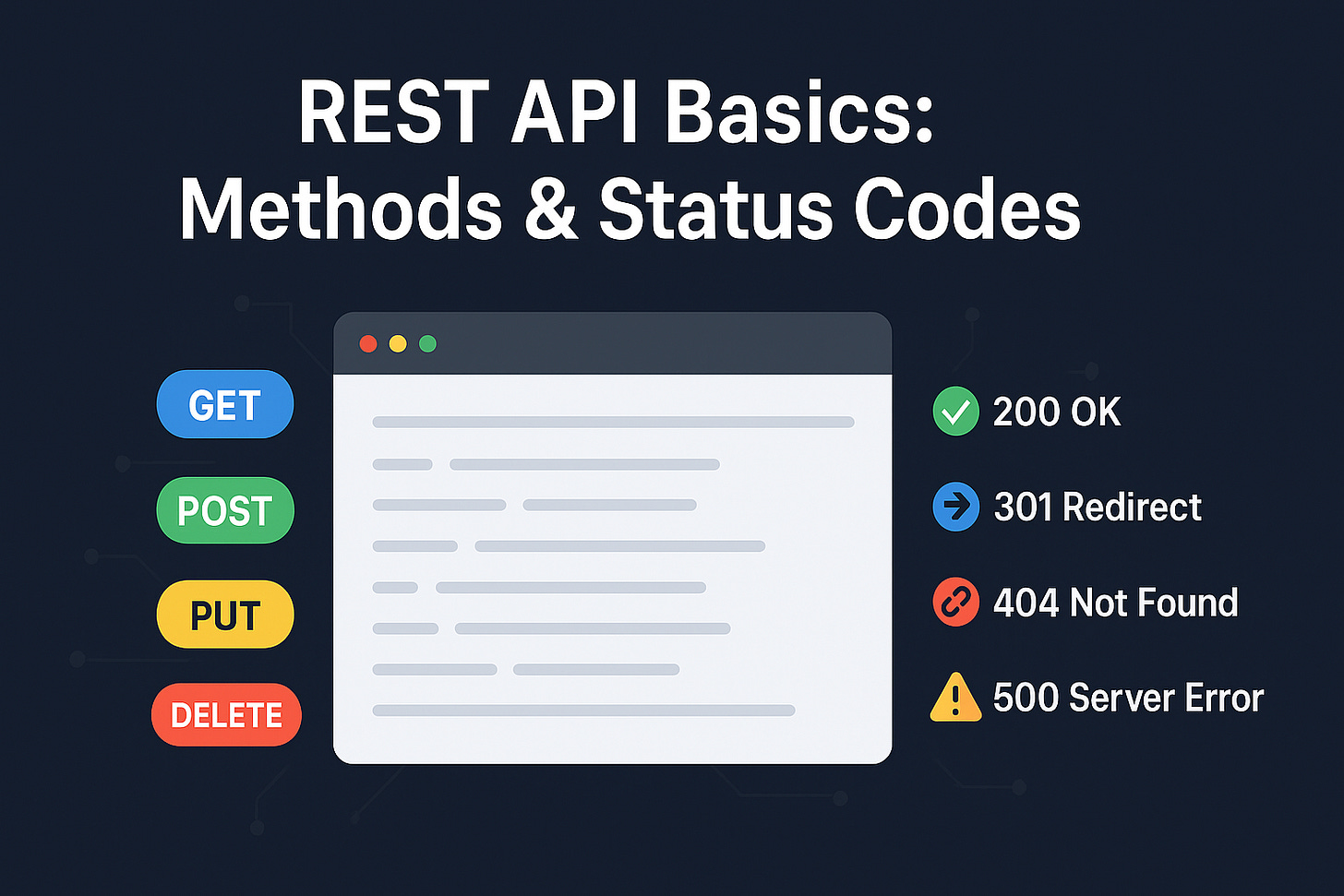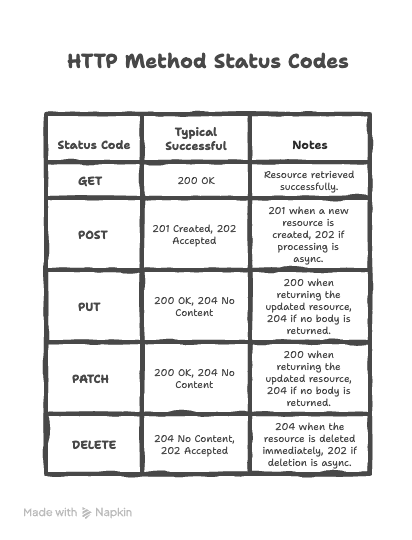REST API Basics: Methods & Status Codes
If you’re starting with REST APIs, two of the most important things you’ll need to understand are HTTP methods and status codes. They’re the building blocks of communication between clients and servers.
🛠️ HTTP Methods
The most common HTTP methods are:
GET – Retrieve a resource (read-only, safe).
POST – Create a new resource.
PUT – Update or replace an existing resource.
PATCH – Partially update a resource.
DELETE – Remove a resource.
But these aren’t the only ones. There are others, like HEAD, OPTIONS, and TRACE, which serve more specialized purposes. For instance, HEAD can be used to fetch only metadata about a resource without retrieving the body.
📊 HTTP Status Codes
Every response from a REST API includes a status code, which tells the client what happened. While there are dozens of codes, here are some of the most common and useful:
✅ Success (2xx)
200 OK – The request was successful.
201 Created – A new resource was successfully created.
202 Accepted – The request was received but not processed yet (often for async operations).
204 No Content – The request succeeded, but there’s nothing to return.
⚠️ Client Errors (4xx)
400 Bad Request – The client sent invalid data.
401 Unauthorized – Authentication is missing or invalid.
403 Forbidden – The client is authenticated but doesn’t have permission.
404 Not Found – The resource doesn’t exist.
409 Conflict – The request could not be completed due to a conflict (e.g., creating a duplicate resource, or version conflicts).
💥 Server Errors (5xx)
500 Internal Server Error – Something went wrong on the server.
📝 Recap
📖 Want to go deeper?
For the full, detailed list of HTTP methods and status codes, check out the official RFC 9110 (HTTP Semantics).
⚡ These are just the basics of REST APIs — enough to get you started on the right track.
If you’d like to dive deeper, check out these related articles:
And of course, don’t forget to subscribe for more insights on Java, backend development, and API best practices. 🚀





